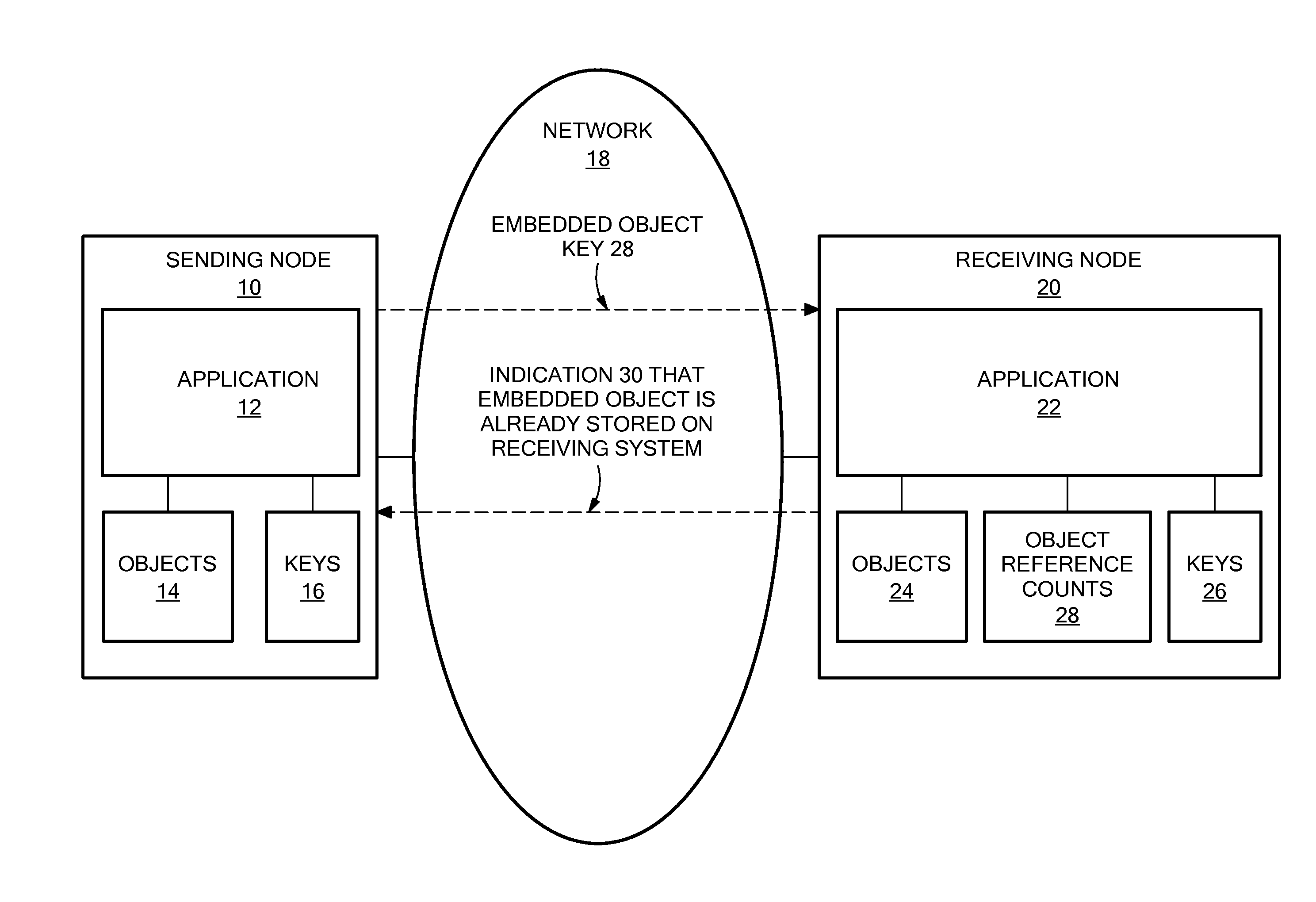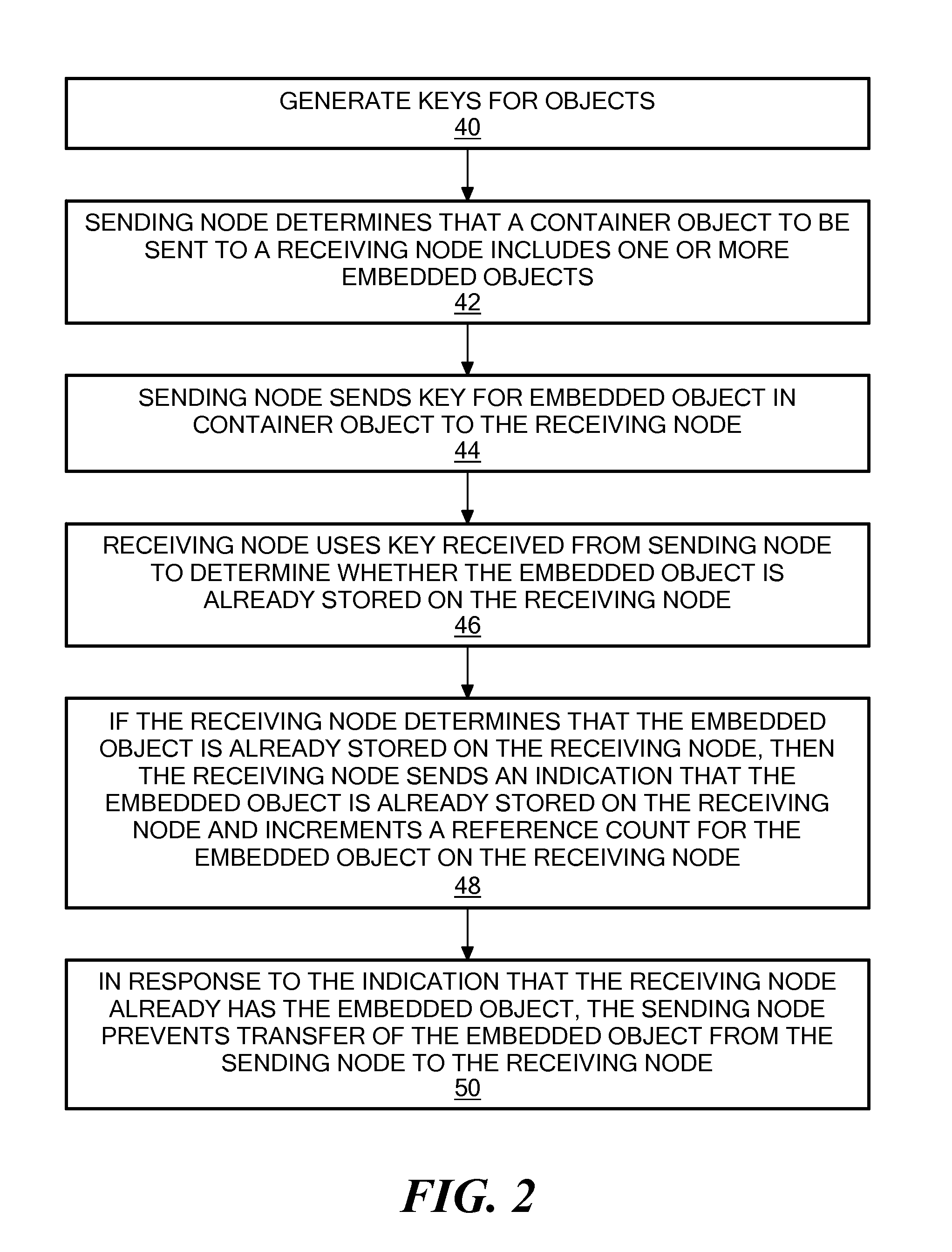Preventing transfer and duplication of redundantly referenced objects across nodes of an application system
- Summary
- Abstract
- Description
- Claims
- Application Information
AI Technical Summary
Benefits of technology
Problems solved by technology
Method used
Image
Examples
Embodiment Construction
[0013]FIG. 1 is a block diagram showing hardware and / or software components in an illustrative embodiment of the disclosed system. As shown in FIG. 1, a Sending Node 10 includes Application 12, Objects 14 and Keys 16. Sending Node 10 is communicably connected with a Network 18, to which a Receiving Node 20 is also communicably connected. Receiving Node 20 is shown including Application 22, Objects 24, Object Reference Counts 28, and Keys 26.
[0014]Application 12 and Application 22 may, for example, be parts of a distributed application program, such as, for example, an electronic mail application, a relational database management application, a Web application or another specific type of application that communicates between nodes using XML (eXtensible Markup Language) streams. Objects 14 and Objects 24 may include any specific type of digital document or file processed or handled in some way by Application 12 and Application 22, such as, for example, application-specific formatted f...
PUM
 Login to View More
Login to View More Abstract
Description
Claims
Application Information
 Login to View More
Login to View More - R&D
- Intellectual Property
- Life Sciences
- Materials
- Tech Scout
- Unparalleled Data Quality
- Higher Quality Content
- 60% Fewer Hallucinations
Browse by: Latest US Patents, China's latest patents, Technical Efficacy Thesaurus, Application Domain, Technology Topic, Popular Technical Reports.
© 2025 PatSnap. All rights reserved.Legal|Privacy policy|Modern Slavery Act Transparency Statement|Sitemap|About US| Contact US: help@patsnap.com



